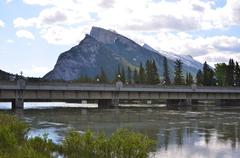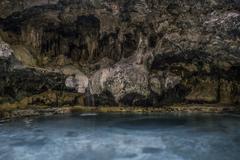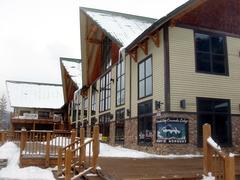
Banff Springs Hotel Visiting Hours, Tickets, and Travel Guide
Date: 03/07/2025
Introduction
Nestled within the Canadian Rockies, the Fairmont Banff Springs Hotel—also known as the “Castle in the Rockies”—stands as an iconic symbol of grandeur, heritage, and luxury. Since 1888, it has blended architectural splendor with the breathtaking natural beauty of Banff National Park. This guide provides in-depth information on the hotel’s history, architecture, visiting hours, ticketing, accommodations, amenities, nearby attractions, sustainability initiatives, Indigenous partnerships, and practical travel tips. Whether you’re planning a day visit or a memorable stay, use this resource to make the most of your experience at one of Canada’s most treasured landmarks (The Banff Blog; Historic Hotels).
Table of Contents
- Introduction
- Historical Overview and Cultural Significance
- Architectural Design and Setting
- Visitor Information
- Accommodations and Amenities
- Cultural Significance and Community Impact
- Integration with Natural and Social Landscape
- Sustainability Initiatives
- Indigenous Acknowledgement and Partnerships
- Frequently Asked Questions (FAQ)
- Conclusion
- References
Historical Overview and Cultural Significance
Origins and Architectural Evolution
The Banff Springs Hotel was established in 1888 by the Canadian Pacific Railway to attract luxury travelers to the Rockies. The original wooden structure was inspired by Scottish Baronial castles. After a fire in 1926, it was rebuilt in limestone and Rundle stone, with architect Walter S. Painter drawing upon both Scottish Baronial and French château elements. Its imposing silhouette, set against Mount Rundle and the Bow River Valley, quickly became a symbol of Canadian luxury and wilderness (The Banff Blog; Secret Attractions).
Role in Canadian Tourism
The hotel’s founding coincided with the creation of Banff National Park and helped transform Banff from a mountain outpost to a world-renowned resort. Its success inspired the construction of other grand railway hotels across Canada, shaping the nation’s hospitality and tourism industries (Park Pilgrim).
National Historic Site Designation
In 1988, the Banff Springs Hotel was designated a National Historic Site of Canada, recognizing its architectural significance and role in nation-building. Heritage Hall, located above the main lobby, features archival displays and artifacts, preserving its storied past (Parks Canada).
Architectural Design and Geographic Setting
Style and Influences
Designed in the Châteauesque style, the hotel emulates European castles with steeply pitched roofs, turrets, dormers, and elaborate stonework. Its design harmonizes with the dramatic mountain surroundings, enhancing its grandeur (Historic Hotels; The Canadian Encyclopedia).
Key Features
- Central Tower (1914): Eleven storeys of Alberta limestone, crowned with crenellated parapets.
- Turrets and Dormers: Castle-like features offering panoramic mountain views.
- Stonework: Local materials ensure fire resistance and natural integration.
- Grand Halls: Cascade Ballroom and Mount Stephen Hall feature vaulted ceilings and ornate details (Wikipedia).
Location
Located at 405 Spray Avenue, Banff, Alberta, the hotel sits at 1,414 meters above sea level, overlooking the Bow and Spray Rivers and near the Banff Upper Hot Springs (Banff Springs Hotel Contact).
Visitor Information
Visiting Hours
- Hotel Lobby & Public Areas: Open daily, typically from 7:00 AM to 11:00 PM.
- Restaurants and Bars: Hours vary; check the hotel’s website for details.
- Willow Stream Spa: Open daily, generally from 9:00 AM to 8:00 PM.
Ticketing and Booking
- Lobby and Public Spaces: Free access.
- Guided Tours, Dining, Spa, Special Events: Advance reservations or tickets required; book via the official website.
- Events: Seasonal events and tours may have separate ticketing (Fairmont Banff Springs Events).
Accessibility
- Wheelchair access throughout the property.
- Accessible guest rooms and facilities.
- Contact the hotel for specific accommodation needs (Banff Springs Hotel Contact).
Directions and Transportation
- By Car: 1.5 hours west of Calgary International Airport via Trans-Canada Highway.
- Shuttles: Available from Calgary with drop-off at the hotel.
- Public Transit: Local bus services connect the hotel to Banff townsite and other attractions (Banff.ca).
Best Times to Visit
- Summer (July): Ideal for hiking, sightseeing, and outdoor activities (The Banff Blog).
- Winter: Excellent for skiing, snowboarding, and festive events.
- Shoulder Seasons: Fewer crowds and better rates.
Accommodations and Amenities
Guest Rooms and Suites
739 guest rooms and suites blend historic elegance with modern comforts—plush bedding, mountain or valley views, complimentary Wi-Fi, and luxury amenities (Banff Springs Hotel).
Fairmont Gold
An exclusive “hotel within a hotel” with private lounge access, concierge, and gourmet offerings.
Dining
Multiple options, from fine dining at 1888 Chop House to casual fare at Rundle Bar and Vermillion Room. Seasonal outdoor dining, afternoon tea, and 24/7 room service are available.
Willow Stream Spa
A world-class spa with mineral pools, steam rooms, and a range of treatments in a serene mountain setting (Travel Banff Canada).
Pools, Fitness, and Golf
Indoor/outdoor pools, fitness center, and the Stanley Thompson-designed golf course provide year-round recreation.
Family, Pet-Friendly, and Accessibility Features
Family suites, children’s programs, pet amenities, and accessible rooms ensure comfort for all guests.
Cultural Significance and Community Impact
The hotel serves as a symbol of Canadian identity, a center for arts and events, and the setting for legendary tales like the “Ghost Bride” and the helpful bellman Sam. It has hosted royalty, celebrities, and major cultural events, reinforcing its role in Canada’s social fabric (The Banff Blog; Secret Attractions).
Integration with Natural and Social Landscape
Relationship with Indigenous Peoples
The hotel stands on traditional territories of Treaty 6, 7, and 8 First Nations and the Métis Homeland, acknowledging the stewardship and cultural significance of the land (Banff Springs Hotel Contact). The nearby Cave and Basin site has been important to Indigenous communities for centuries.
Environmental Stewardship
Located within a UNESCO World Heritage Site, the hotel prioritizes sustainability with energy efficiency, waste reduction, and conservation programs (Banff Hot Springs).
Sustainability Initiatives
- Five-Green Key Eco-Rating and Audubon Cooperative Sanctuary certifications.
- Zero Waste Trailblazer recognition for food waste tracking, recycling, and composting.
- Over 75% of food sourced locally, with an onsite microgreens program.
- Energy and water conservation measures, including EV charging stations and efficient irrigation on the golf course.
- Alignment with United Nations Sustainable Development Goals (Fairmont Banff Springs; Secret Attractions).
Indigenous Acknowledgement and Partnerships
- Recognition of the traditional territories of the Niitsitapi (Blackfoot Confederacy), Îyârhe Nakoda, Tsuut’ina, Ktunaxa, Secwépemc, Mountain Cree, Dene, and Métis Nation of Alberta, District #4.
- Commitment to reconciliation and authentic presentation of Indigenous histories and cultures in partnership with Parks Canada and Indigenous communities.
Frequently Asked Questions (FAQ)
Q: What are the Banff Springs Hotel’s visiting hours?
A: Public areas are generally open 7:00 AM–11:00 PM; check the website for specific venue hours.
Q: Do I need tickets to visit the hotel?
A: No ticket is needed for public areas; reservations are required for dining, spa, and tours.
Q: Is the hotel accessible for guests with disabilities?
A: Yes, accessible rooms and facilities are available; contact the hotel for details.
Q: Are pets allowed?
A: Dogs are welcome with prior arrangement and a fee; amenities provided.
Q: What are nearby attractions?
A: Banff Park Museum, Cave and Basin National Historic Site, Banff Upper Hot Springs, Banff Gondola, and hiking trails.
Q: How do I get to the hotel from Calgary International Airport?
A: It’s about a 1.5-hour drive; shuttle services are available.
Q: When is the best time to visit?
A: July for warm weather and outdoor activities; winter for skiing and festive experiences.
Conclusion
The Fairmont Banff Springs Hotel remains an enduring symbol of Canadian heritage, offering a remarkable blend of history, luxury, sustainability, and Indigenous respect. With its architectural magnificence, world-class amenities, and commitment to inclusivity and stewardship, it provides an unforgettable gateway to Banff National Park. For the latest on visiting hours, ticketing, accommodations, and tours, visit the official website. Download the Audiala app for maps, insider tips, and updates, and begin planning your adventure to the “Castle in the Rockies” today!
References
- The Banff Blog, 2025, Fairmont Banff Springs Hotel Overview
- Secret Attractions, 2025, Underrated Cultural Sites in Banff
- Park Pilgrim, 2025, Banff in July
- Historic Hotels, 2025, Fairmont Banff Springs History
- The Canadian Encyclopedia, 2025, Banff Springs Hotel
- Parks Canada, 2025, National Historic Site Designation
- Fairmont Banff Springs Hotel Official Website, 2025
- Travel Banff Canada, 2025, Banff Springs Hotel Deals and Amenities










